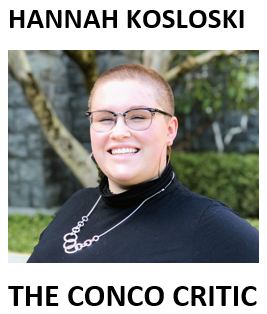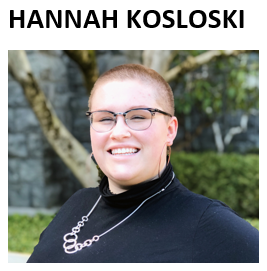 Our campus is covered in snow and pretty soon is going to be flooded. The sidewalks are covered, doorways are blocked and it’s generally just harder to get around. I know I’ve done my fair share of complaining about the snow and what feels like my limited ability to get around. However, a slippery parking lot and wet shoes are nothing compared to the everyday struggles and additional work our students with handicaps go through solely because our campus is not fully accessible.
Our campus is covered in snow and pretty soon is going to be flooded. The sidewalks are covered, doorways are blocked and it’s generally just harder to get around. I know I’ve done my fair share of complaining about the snow and what feels like my limited ability to get around. However, a slippery parking lot and wet shoes are nothing compared to the everyday struggles and additional work our students with handicaps go through solely because our campus is not fully accessible.
The definition of accessibility is the quality of being able to be reached or entered. For a majority of Concordia’s students, we don’t even realize that our campus is inaccessible for all ability types, because we don’t have to think about it. We don’t realize that those two little steps into Hoyum or the staircase into Lorentzsen are a blockade. We don’t understand that Park Region is the only dorm that is wheelchair accessible. The lack of accessibility and inclusivity at Concordia is a problem. It is an issue we need to fix.
Having just one wheelchair accessible dorm excludes and exiles all of our students who have a handicap. As I mentioned in my last article, “Concordia doesn’t do enough for non-binary students,” we can’t just exile what we don’t understand or identify with. We need to make a conscious effort to include all identities and abilities. Our awareness and accommodation cannot be an afterthought. It is something that must be ever present in our minds and actions, especially as an educational institution. Especially if we require students to live on campus for two years.
The two-year housing requirement is something I have general beef with, but my personal grievances are beside the point. The living requirement should not be a requirement if our residence hall buildings are not accessible to all students. Residence Life needs to work with the institution to redesign or renovate the dorm halls if they continue to uphold the live-on requirement. In fact, all buildings on campus (besides the science center because of its recent completion) should be considered for evaluation and renovation in order to better accommodate for our handicapped and limited ability students. The creaky and rusting elevators should be replaced. The buildings without elevators should have one installed. The outside of every building should also include a wheelchair ramp, especially if the entrance is a staircase.
As an institution, we should also open the conversation about accessibility and diversity. Starting this year, Concordia has begun to include diversity statements on every syllabus. Doing this does open the conversation about diversity, inclusivity, and accessibility in classrooms, but it is a limited conversation without dialogue, understanding, or actual physical change. Often times, syllabus day is a quick 10-15 minutes look over to mention Concordia’s accommodation policy and the class schedule. Or there is no syllabus day and students aren’t even being introduced to the concepts of diversity and accessibility. Either way, we are not truly trying to understand and accommodate for our students’ needs. A simple statement only goes so far. Instead, we should try to engage in conversations about accessibility, diversity, and inclusivity. We should be inviting our students with handicaps to the table. We should be inviting students of all ranges of ability to the table. Accessibility and accommodation shouldn’t be a conversation we are afraid of or unwilling to have. We can do better than this.

